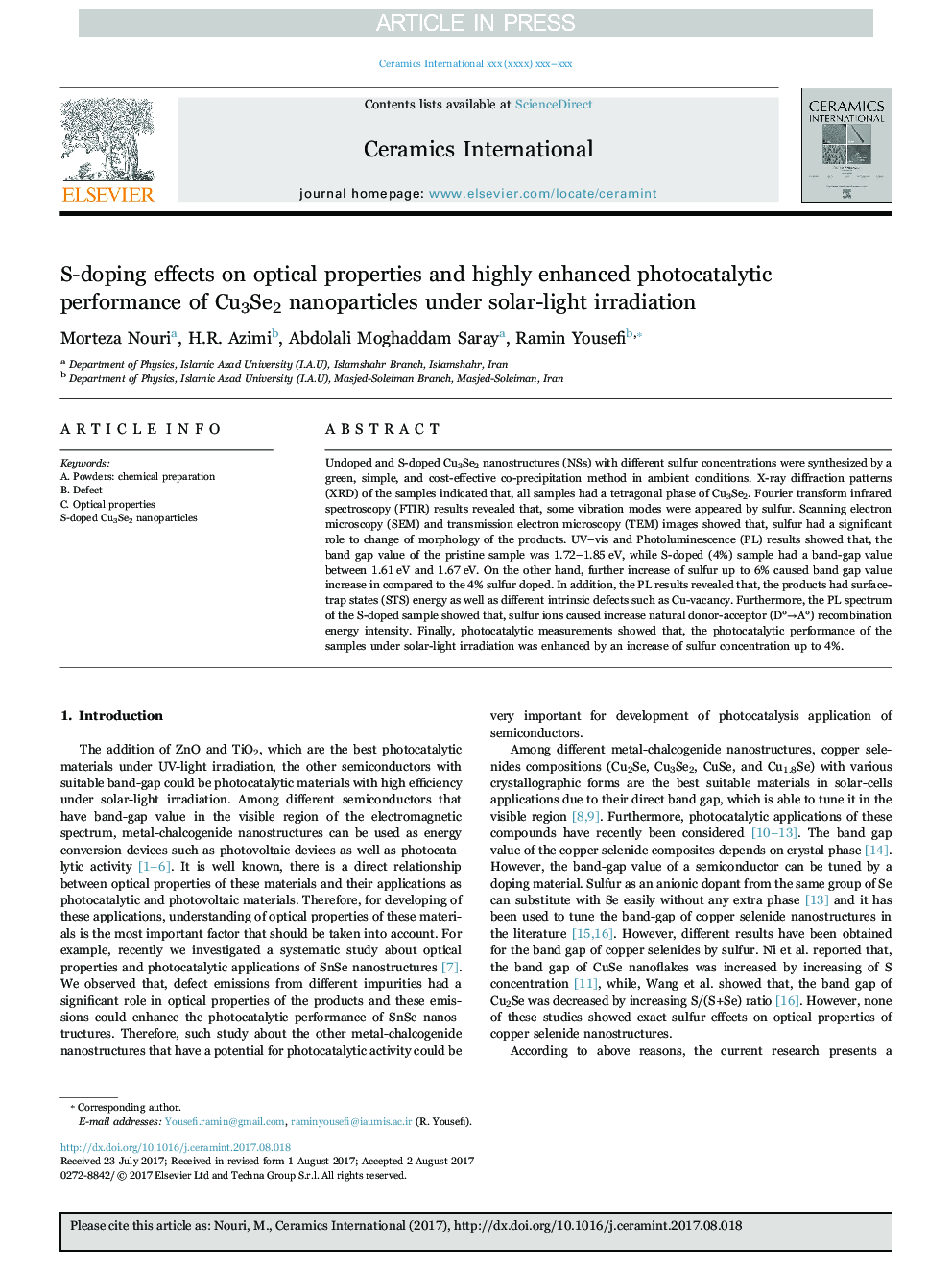| Article ID | Journal | Published Year | Pages | File Type |
|---|---|---|---|---|
| 5437385 | Ceramics International | 2017 | 6 Pages |
Abstract
Undoped and S-doped Cu3Se2 nanostructures (NSs) with different sulfur concentrations were synthesized by a green, simple, and cost-effective co-precipitation method in ambient conditions. X-ray diffraction patterns (XRD) of the samples indicated that, all samples had a tetragonal phase of Cu3Se2. Fourier transform infrared spectroscopy (FTIR) results revealed that, some vibration modes were appeared by sulfur. Scanning electron microscopy (SEM) and transmission electron microscopy (TEM) images showed that, sulfur had a significant role to change of morphology of the products. UV-vis and Photoluminescence (PL) results showed that, the band gap value of the pristine sample was 1.72-1.85 eV, while S-doped (4%) sample had a band-gap value between 1.61 eV and 1.67 eV. On the other hand, further increase of sulfur up to 6% caused band gap value increase in compared to the 4% sulfur doped. In addition, the PL results revealed that, the products had surface-trap states (STS) energy as well as different intrinsic defects such as Cu-vacancy. Furthermore, the PL spectrum of the S-doped sample showed that, sulfur ions caused increase natural donor-acceptor (D°âA°) recombination energy intensity. Finally, photocatalytic measurements showed that, the photocatalytic performance of the samples under solar-light irradiation was enhanced by an increase of sulfur concentration up to 4%.
Related Topics
Physical Sciences and Engineering
Materials Science
Ceramics and Composites
Authors
Morteza Nouri, H.R. Azimi, Abdolali Moghaddam Saray, Ramin Yousefi,
